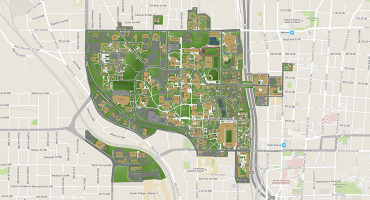Mammals learn a large repertoire of novel actions by refining variable movements into precise skills. The brain achieves this by assigning credit to movements that led to desired outcomes. Even for simple actions such as reaching to a spatial target, the brain could assign credit to the direction, endpoint target location, speed, etc. As such, different movement strategies may emerge across individuals, depending on what is assigned with credit.
My goal is to dissect the sensorimotor areas controlling different aspects of these movements, and probe what determines the learning and control of different reach strategies. I developed a behavior task in which head-fixed mice generate exploratory forelimb trajectories with a joystick and are rewarded when they hit a hidden target in the workspace. As mice learn, they refine their target reaches which become less variable in direction, tortuosity, speed, and targeting precision. I show that different aspects of the reach such as direction or speed are learned and controlled through distinct cortical and thalamic networks. For instance,
sensorimotor cortex is required to generate reaches with high directional variability across different positions of the workspace, while a specific nucleus of thalamus is required to refine the overall reach direction.
But what reach strategies are mice learning? By relocating the start position in a small number of probe trials I discovered that some animals learned a direction-based strategy (move in the same initial direction from new starts), while others learned an endpoint-based strategy (guide the joystick into the target from new starts, adjusting their direction). Which strategy an individual animal learned correlated with the degree of spatial directional variability during exploration, the aspect of the reach controlled by cortex. This correlation is also recapitulated by model-free reinforcement learning agents trained in a similar task. Overall, these findings suggest that the sensorimotor system learns different control strategies by exploring and reinforcing certain movement aspects during learning, and that these aspects are generated by distinct circuits.
My goal is to dissect the sensorimotor areas controlling different aspects of these movements, and probe what determines the learning and control of different reach strategies. I developed a behavior task in which head-fixed mice generate exploratory forelimb trajectories with a joystick and are rewarded when they hit a hidden target in the workspace. As mice learn, they refine their target reaches which become less variable in direction, tortuosity, speed, and targeting precision. I show that different aspects of the reach such as direction or speed are learned and controlled through distinct cortical and thalamic networks. For instance,
sensorimotor cortex is required to generate reaches with high directional variability across different positions of the workspace, while a specific nucleus of thalamus is required to refine the overall reach direction.
But what reach strategies are mice learning? By relocating the start position in a small number of probe trials I discovered that some animals learned a direction-based strategy (move in the same initial direction from new starts), while others learned an endpoint-based strategy (guide the joystick into the target from new starts, adjusting their direction). Which strategy an individual animal learned correlated with the degree of spatial directional variability during exploration, the aspect of the reach controlled by cortex. This correlation is also recapitulated by model-free reinforcement learning agents trained in a similar task. Overall, these findings suggest that the sensorimotor system learns different control strategies by exploring and reinforcing certain movement aspects during learning, and that these aspects are generated by distinct circuits.
Event Details
Date:
Thursday, February 29, 2024 - 11 to Thursday, February 29, 2024 - 12
Location:
EBB 1005
Extras:
Free Food
For More Information Contact
rbailey74@gatech.edu



